Menu
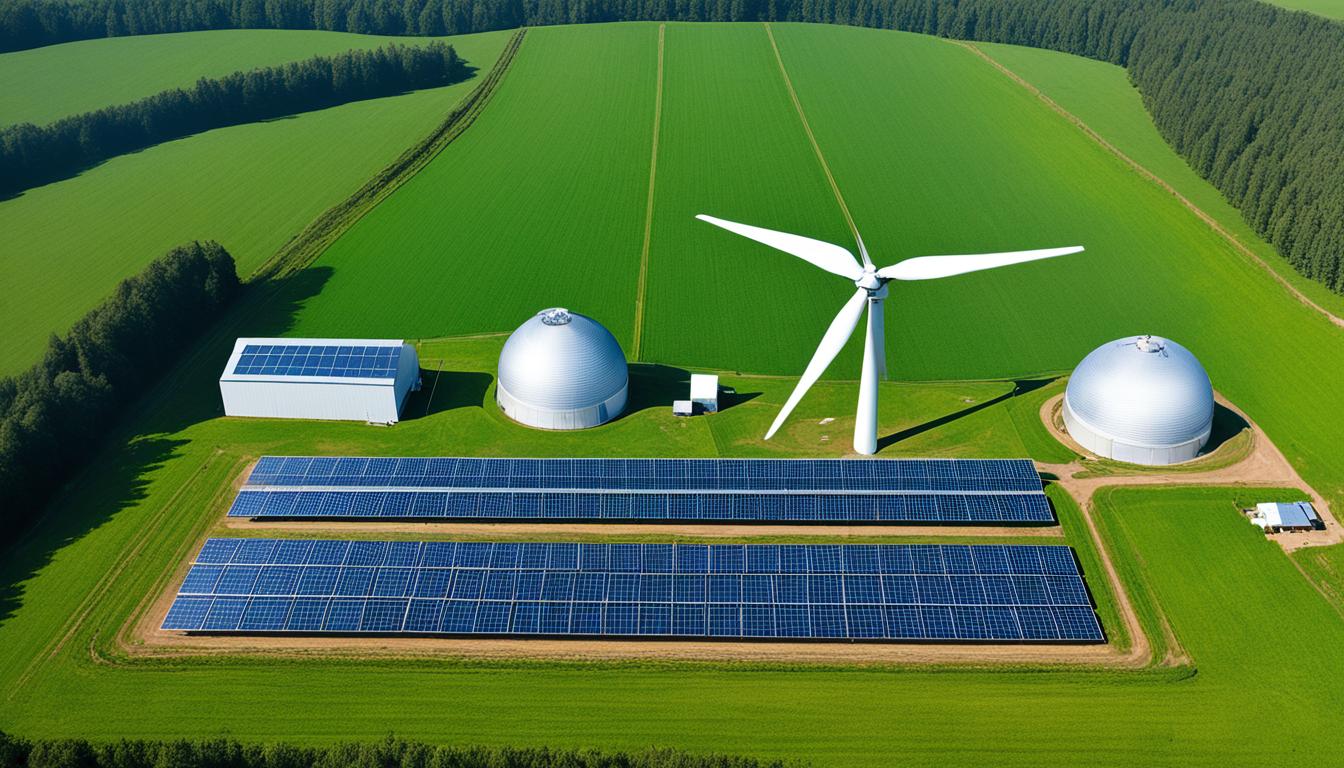
Did you know, in 2007, agriculture in the U.S. was a major source of greenhouse gases? This was shown by red bars for emissions and green for removal. It shows how important it is to lower these emissions with farming. This highlights the urgent need for sustainable agriculture practices.
Farmers have a big role in fighting climate change. They can use practices that are good for nature and their business. Things like farming without ploughing, changing what animals eat, and better handling of waste can help a lot. But, farmers need good reasons, like money, to start doing these things.
It’s vital for farmers to get involved. Things like getting paid for storing carbon and a system that allows trading pollution can really help. These schemes can pay for changing to more eco-friendly ways of farming. Plus, they can bring extra money in for farmers. The aim is to make these changes profitable for farmers while being good for the planet.
To tackle climate change, we must look closely at greenhouse gases in farming.
Carbon dioxide comes mainly from soil and the breaking down of nature stuff. There’s talk about whether less soil work means less CO2. Adding cover crops can cut CO2 by making soil better. Methane is mostly from animals and their droppings. Using different animal food aims to lower this gas. But, it might not be great for the animals. Nitrous oxide comes from using too much fertiliser. By using less but more often, we can drop this gas.
Today, we know farming puts out a lot of greenhouse gases. In the U.S., it made up 10.6% of gas releases in 2021. This is about 671.5 million metric tons of CO2-eq. It covers things like how we use soil, manure, and cows.
Innovations in drone-based remote sensing can assist in more accurate fertilizer applications, potentially reducing excess nitrogen and associated nitrous oxide emissions. Incorporating legumes as cover crops can naturally boost soil nitrogen levels, diminishing the necessity for added fertilizers. While anaerobic digesters offer a solution for capturing methane from manure decomposition, the economic feasibility of biogas production remains uncertain due to energy content and impurity issues. However, regions such as California, with stringent greenhouse gas regulations, present significant offsite demand for renewable natural gas.
The adverse effects of climate change are already visible, with the global annually averaged surface air temperature rising by about 1.8°F (1.0°C) over the last 115 years. This warming trend not only impacts crop yields but also amplifies the urgency to implement farming practices aimed at CO2 reduction farming and overall agriculture emissions data management.
Looking ahead, we see new tech helping with better fertiliser use. This could mean less pollution. Also, adding certain plants can reduce the need for extra fertilisers. Machines that take in gas from manure sound good. But, there are doubts about if they’re worth the money.
Yet, places like California need a lot of this clean gas because of strict rules. Such places boost the use of special gas made from animal waste.
Climate change is causing noticeable harm. The world has got warmer by 1.8°F (1.0°C) in the last 115 years. This rise is making farming tougher. It tells us we need to cut down on CO2 and manage how we farm better.
Conservation tillage is a green farming method that cuts down on greenhouse gas emissions. It does this by keeping more carbon in the soil. Research by Al-Kaisi & Yin (2005) found that the way soil is treated and farm waste impacts carbon levels.
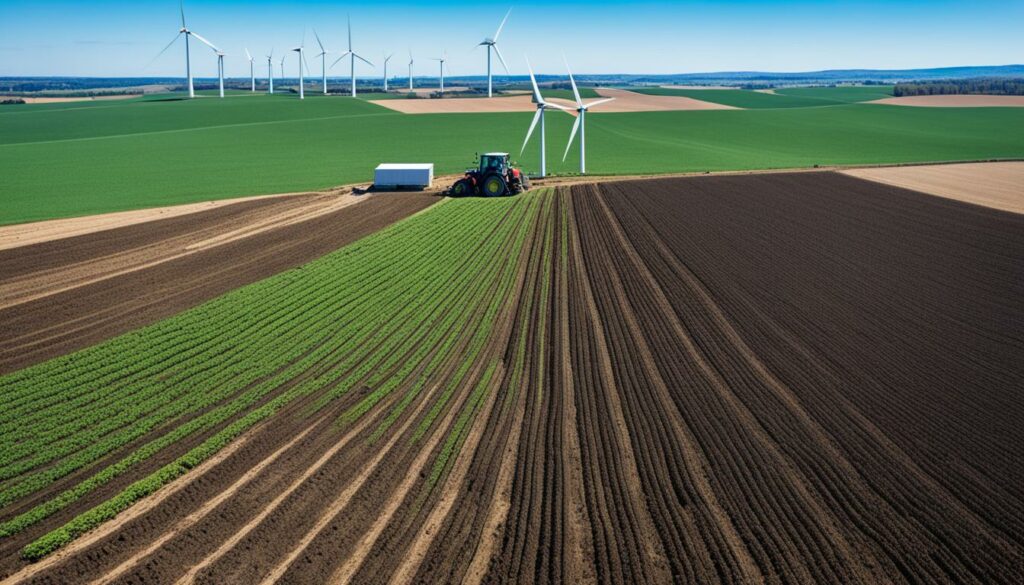
It’s widely known that conservation tillage works well in many places. Studies by Allmaras & Dowdy (1985) showed its success in the United States. It helps the environment and boosts crop growth in different areas.
Conservation tillage mainly helps the soil and traps carbon. In Argentina, Fabrizzi et al. (2005) found that less tilling led to better water use and crops. Another study highlighted how no-till methods can store a lot of carbon. This happens over time, making it a good way to fight climate change.
To use conservation tillage well, farmers need a good plan. They should try methods that don’t disturb the soil too much. Research by Ma et al. (2013) supports this. It improves the soil and helps crops grow.
Farmers also need to think about possible downsides. Saving carbon is great, but it can lead to more nitrous oxide in the air. Checking the soil often and planning well can help. This way, they can get the most out of conservation tillage while keeping the air clean.
Cutting back on nitrogen fertiliser use is key to lowering farm emissions. About five percent of the world’s greenhouse gases come from fertilisers. Most of this happens when they’re put on the fields. But, if we use fertilisers smarter, we can help the planet and grow better crops too.
Precision agriculture techniques are vital in fighting farm emissions. They use high-tech methods like GPS and remote sensing to see exactly what every part of the field needs. This way, crops get just the right amount of fertiliser. It avoids wasting fertiliser and cuts down harmful emissions. Adopting these methods helps farmers grow more food while reducing the need for a lot of nitrogen fertilisers.
Regular soil and plant tests are also key. They show farmers what their crops really need. This lets them use fertilisers more accurately, reducing waste and harm to the environment. Combining these tests with high-tech farming allows for a smart, sustainable farming approach. This method helps manage nutrients better, promoting longer-term farm health.
Imagine the difference these methods could make. Right now, nitrogen fertilisers are a big part of farm emissions. But by 2050, using the latest farming technologies could cut these emissions to just a fifth of what they are today. This shows how big of a change farmers can make by using smart techniques and testing the soil.
Livestock farming is a big source of human-made methane, making up about 27% of these emissions. This is a key concern for global warming. By changing what we feed animals, we can cut down on methane. There are some great feed and additives options to explore, which can make a big difference.
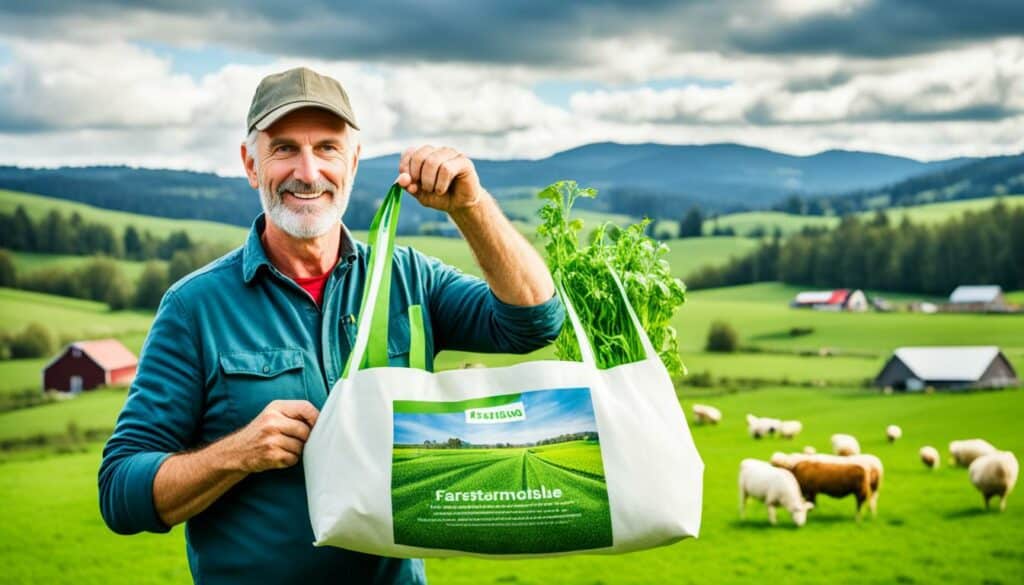
Choosing top-quality feed for animals is vital in the fight against methane. Today, better feed for cows makes up 21% of all protein. That’s about 9.1 billion kilograms. As we get better at feeding, this amount should go up. In the years to come, we could be looking at 28% or even 45% of all protein coming from quality feed.
Not only does good feed lower emissions, but it also makes animals more productive. Cows fed the best feed can produce over 12 thousand more kilograms of milk each year. But, it does cost more to feed animals this way, about US$13.38 per protein kilogram instead of US$9.48 for basic feeds.
Adding certain things to animal feed can greatly reduce methane. A study by Melgar et al. (2021) showed these additions cut methane by up to 30%. For example, A. taxiformis can lower emissions by 55% in dairy cows and 98% in beef cows. 3-Nitrooxypropanol (3NOP) helps too, reducing emissions by 36% to 50%.
More additives like tannins and nitrates also make a difference. Tannins can cut down dairy cow methane by 13-16%. Nitrates, over which there are less concerns, reduce emissions by up to 16% in dairy cows and 12% in beef cows. Essential oils have helped as well, showing an 11% reduction. Mootral, which is a mix of garlic and citrus, is also proven to work.
Studying and using these additives will help us lessen the environmental impact of raising animals. It could save up to 15.05 gigatons of CO2 equivalent by 2050 under Scenario 2. Plus, it might save nearly US$1.88 trillion.
| Feed Quality Improvements | Scenario 1 (2050) | Scenario 2 (2050) |
|---|---|---|
| Protein Production | 16.12 Billion kg | 26.05 Billion kg |
| % of Total Protein | 28% | 45% |
| CO2 Emissions Avoided | 4.42 Gigatons | 15.05 Gigatons |
| Net Savings | US$554.07 Billion | US$1.88 Trillion |
Reducing greenhouse gases starts with managing manure well. Strategies for better manure management GHG reduction make handling manure more eco-friendly. They include keeping manure under covers, using it wisely, and turning methane into energy.
Key to lowering methane is anaerobic digestion. This can cut methane by 50% to 55%. It’s done by breaking down waste in a controlled way, reducing the need for fossil fuels. Systems where cows graze help too. They lead to less methane compared to other common ways of storing manure.
Composting is another important method. It uses air to break down waste, cutting methane. How you compost matters a lot. It shows why picking the right method for eco-friendly manure handling is crucial. Also, spreading manure daily can lower methane. This is better than storing it in certain ways that allow methane to build up.
Using urease inhibitors is a smart move. It helps reduce nitrous oxide from manure heaps. This gas is almost 300 times worse for our climate than carbon dioxide. So, stopping it from escaping is a big deal.
| Strategy | Greenhouse Gas Reduction Impact |
|---|---|
| Anaerobic Digestion | 50% – 55% methane reduction |
| Pasture-Based Management | Decreased methane compared to liquid/slurry systems |
| Composting | Methane reduction varies by method |
| Daily Spread Practices | Lower methane emissions than anaerobic lagoons |
| Urease Inhibitors | Reduced nitrous oxide emissions |
These methods help in two main ways. They drop greenhouse gas emissions, and they change waste into something useful. Using these tools lets farmers lower their environmental impact while making their farms more productive.
Agroforestry is a smart mix of farming and forestry practices. It boosts the environment and the wallet. By planting trees in farm fields, we can actually help the planet. Trees increase the variety of life, make the soil better, and soak up carbon well.
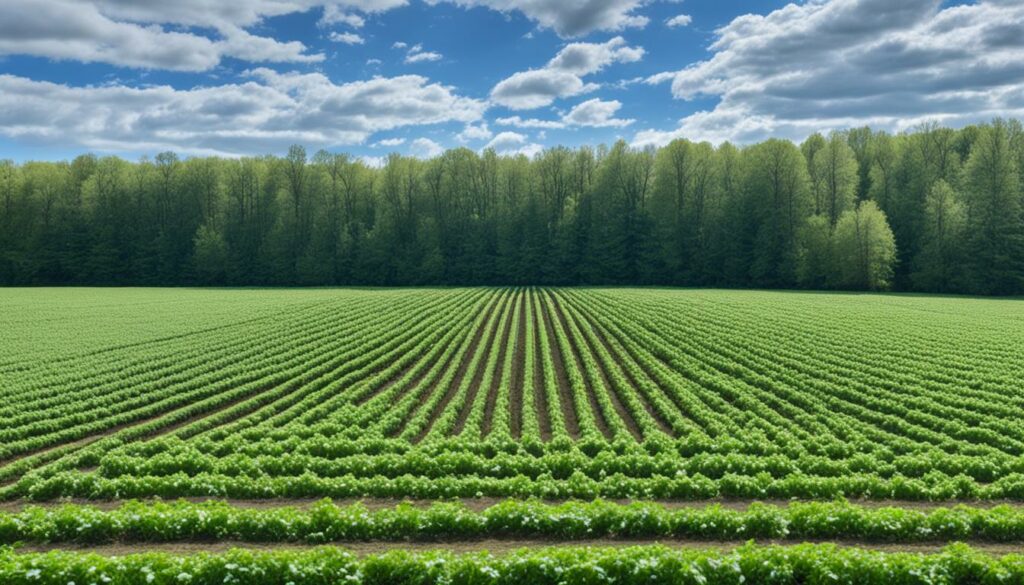
Agroforestry is about adding trees and bushes to farms. Trees’ trunks are big helpers for the planet. They store a lot of carbon. Across different setups, they manage greenhouse gases well. This ranges from 2.71 to 7.61 tons of CO2 per acre. Agroforestry is great for fighting climate change.
Introducing agroforestry needs good planning and knowledge of its perks. Farmers can fight climate change by smartly planting trees:
Using agroforestry well not only helps against climate change. It also benefits nature and the wallet, making it stand out for farming’s future sustainability.
| System | Total GHG Emissions (t CO2e ha-1) | Carbon Storage (t C ha-1) | Required Trees (trees ha-1) |
|---|---|---|---|
| System 1 | 7.98 | 54.6 | 17 |
| System 2 | 4.25 | 11.4 | 39 |
| System 3 | 4.04 | 25.7 | 44 |
| System 4 | 2.80 | 5.9 | 35 |
Cover crops are a great way to store carbon in the soil. When farmers grow these crops between regular planting times, it boosts the soil’s organic matter. This also helps lower erosion. And it’s a big step towards reducing the gases causing climate change.
To make the most of cover crops, it’s essential to know what types there are and what each does. This knowledge helps farmers manage their lands for both good farming and reducing greenhouse gases.
There are different kinds of cover crops. They each bring their own benefits and features. These include leguminous crops such as clover and vetch that can help the soil by fixing nitrogen in it. This means farmers don’t have to use as many chemicals.
The key is to pick the right cover crop for the farm’s needs. Any choice can help the soil and store carbon.
Cover crops do a lot of good things for farms and the planet. They add organic matter to the soil, making it a big storehouse for carbon. This keeps harmful CO2 out of the air.
They also stop soil from eroding when the wind or rain blows. This keeps soil healthy and stops carbon from escaping into the air. In dry areas with not much organic matter in the soil, cover crops can boost carbon storage once there’s enough organic matter.
| Benefit | Description |
|---|---|
| Reduces Erosion | Minimises loss of soil and organic matter |
| Suppresses Weeds | Reduces weed pressure and competition |
| Enhances Soil Moisture | Improves water retention and efficiency |
| Minimises Soil Compaction | Breaks up compacted soil layers |
| Increases Economic Gains | Provides livestock feed and green manuring |
By helping the land be more productive, cover crops assist in reducing greenhouse gases. They achieve this by using carbon better and keeping it from escaping. Thus, cover crops are crucial for a farming future that’s both strong and kind to the Earth.
No-till farming is key for farmers who care about the environment. It helps significantly reduce CO2. This method keeps the soil healthy, stores carbon, and stops erosion. Because it doesn’t involve turning the soil, less CO2 is let out from the ground.
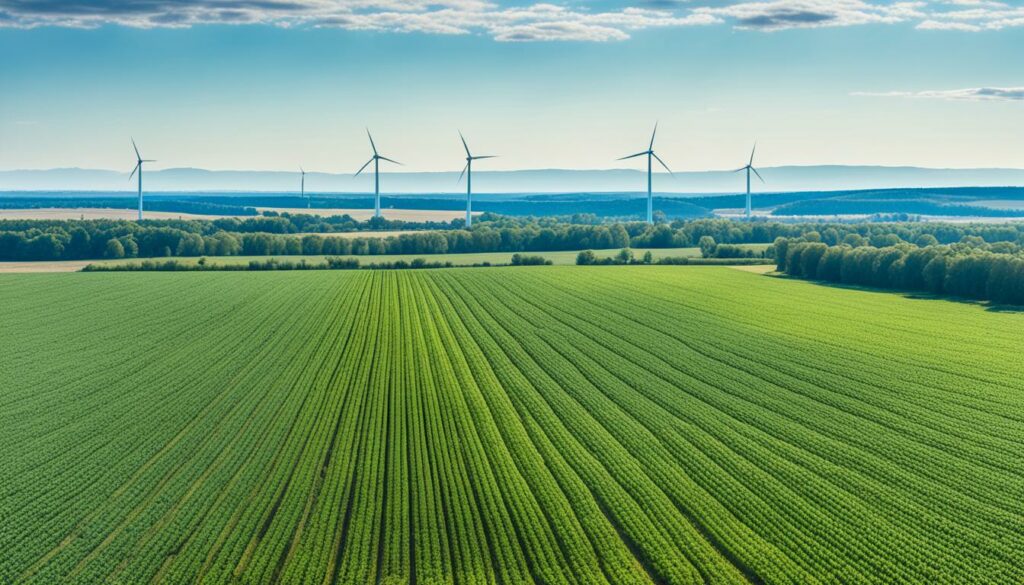
Yet, in the U.S., only a small portion of farmers use no-till methods. No-till farming helps save 588 million gallons of diesel yearly. This stops 5.8 million tons of carbon-dioxide from going into the air. It also cuts down soil erosion by over 80%, which is good for water quality.
No-till can also be good for a farmer’s pocket. Macauley Farms in New York saw their yearly earnings go up by over $25,000. Their profits from the investment were 135%. They saved $72 per acre on work and tools. And the amount of soil washing away was almost zero.
The government’s Conservation Stewardship Program and EQIP give farmers a helping hand to start no-till. These efforts are important for cutting down CO2 for years to come. Using no-till means needing less fuel for tractors, which is a big win for the planet.
But, switching to no-till isn’t totally easy. It can be hard for farmers because it might cost more at first. They must think about the cost versus the long-term benefits. But, the chance to lower greenhouse gases is worth it for a sustainable future.
| Statistic | Value |
|---|---|
| Annual Diesel Fuel Savings | 588 million gallons |
| CO2 Emission Reduction | 5.8 million tons annually |
| Erosion Reduction | More than 80% |
| Labor and Machinery Cost Savings | $72 per acre |
| Greenhouse Gas Emission Reduction | 69% on Macauley Farms |
Rotational grazing is a great way to boost pasture growth and store carbon in the soil. It lets farmers enjoy better soil health and animal care. This type of farming is key to sustainability in agriculture.
In this method, animals move from one spot to another, allowing each area to recover. It keeps the grass healthy and growing well. The U.S. Department of Agriculture and Extension Services can help farmers learn how to do this.
Rotational grazing brings more plant types, better soil, and a thicker grass cover. Animals spread their manure evenly, which means less need for manure storage. This method also cuts down on greenhouse gases from the farm. But, it needs more fences and might need advice from experts. In the end, it’s a smart move for the farm’s future.
This method is great for storing carbon in the soil. It lets the land and plants recover properly, putting carbon back into the ground. This helps fight climate change by reducing greenhouse gases.
Practising rotational grazing can help farms lower their emissions by a lot. In Blue Mountain Farm, Pennsylvania, they cut down on 342 tons of carbon dioxide yearly. This method also helps lower U.S. methane emissions by nearly a third. By doing this, rotational grazing supports the aims of sustainable farming.
| Benefits | Details |
|---|---|
| Environmental Impact | Sequesters carbon and reduces greenhouse gas emissions. |
| Soil Health | Improves soil structure, increases organic matter. |
| Pasture Resilience | Enhances drought resistance, ensures consistent forage supply. |
| Economic Factors | Reduces costs and increases profitability in the long term. |
To conclude, using rotational grazing is good for both the environment and the farm’s performance. Yet, it needs careful planning and some investment. Various government schemes exist to help farmers switch to this sustainable method.
Using energy wisely and moving to better fuels on farms helps cut back on greenhouse gases. This change makes farming more planet-friendly.
Looking closely at farm energy is key to saving big. This check-up finds ways to lessen waste and use energy smarter. It recommends fixes like better machines and green power. This means farming can be kinder to the Earth.
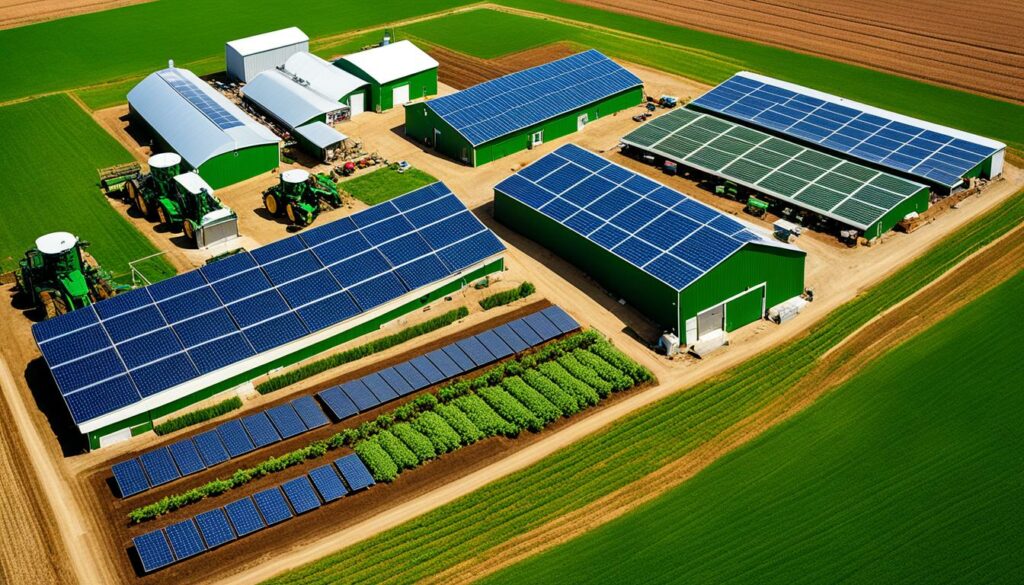
Swapping old machines for efficient ones makes a big difference. It lowers the farm’s carbon footprint significantly. Plus, switching to green energy sources brings multiple benefits.
By changing to sustainable equipment, farms can slash their emissions. Also, they might get cash rewards for helping the environment. This helps make eco-friendly farming more popular.
| Greenhouse Gas | Percentage Emissions 2021 | Source |
|---|---|---|
| CO2 | 11.9% | Fossil-fuel powered equipment |
| Methane | 41.5% | Enteric fermentation |
| Nitrous Oxide | 46.6% | Soil management |
Sustainable farming demands we look at on-farm clean energy. Using solar panels, wind turbines, and anaerobic digesters lets farmers be green. They help cut greenhouse gases and boost farm income. This shift changes not just the farm’s finances but its impact on the planet.
Solar panels in agriculture have grown quickly. They cut dairy farm heating bills by up to 85% each year. The U.S. has big solar power in many areas:
| Sector | Installed Solar Capacity (MWdc) |
|---|---|
| Residential | 20,000 MWdc |
| Commercial | 10,000 MWdc |
| Community Solar | 30,000 MWdc |
| Utility | 50,000 MWdc |
| Utility (CSP) | 60,000 MWdc |
Wind turbines on farms are also a key in clean power. A residential system costs between $13,000 and $40,000. They work best in the colder months and at night for a consistent power flow.
Farm waste management gets a boost and renewable power from anaerobic digesters. They turn farm waste into biogas for electricity or heating. By cutting down use of oil and gas, they also lessen waste issues.
Investing in anaerobic digesters can be smart. If the U.S. used more biomass, farmers and rural areas could get $20 billion more income. Plus, it could take out as much CO2 as not driving 70 million cars.
The way these systems work is getting more financial help and funds. But, updates to these offers happen often. So, it’s good for farmers to keep up, using tools like the DSIRE for reliable info.
Reducing methane from manure is key to cutting farming’s greenhouse gases. Many methods can lower methane from manure storage. This helps make farming kinder to the planet.
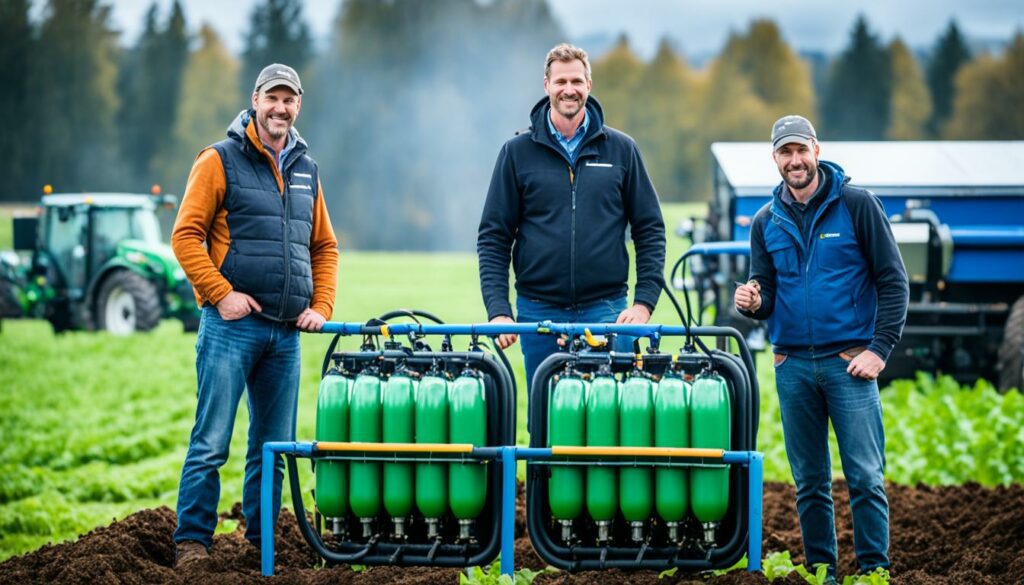
Covering manure storage is a great way to cut methane. It stops the conditions where methane forms. This method not only lowers methane but also cuts down bad smells and pollution.
Using anaerobic digesters captures methane and turns it into biogas. This reduces greenhouse gases. Comparing it to open lagoons, the use of digesters means less methane escapes.
Spreading manure daily also helps. It avoids the no-oxygen conditions where methane is made. Combining these techniques boosts biogas making. This helps the planet and creates renewable energy.
Producing biogas faces cost and environmental issues. Still, places like California find it valuable. Farmers choosing this must balance the pros of cutting methane with these issues.
| Practice | Impact on Methane Emissions | Additional Benefits |
|---|---|---|
| Covering Manure Storage | Reduces emissions by limiting anaerobic conditions | Minimises odours and nutrient runoff |
| Anaerobic Digestion | Captures methane for biogas production | Provides renewable energy source |
| Daily Spread | Decreases methane by avoiding anaerobic storage | Enhances soil fertilisation |
Farming can really help with climate change by cutting down on greenhouse gases. If farmers use greener methods, it makes a big difference. They can help meet local and worldwide emission goals. We will talk here about how policies, carbon offsets, and trading systems can aid this change.
It’s important that farmers get help to try new, green ways. This help might be money, less tax to pay, or special funds for eco-friendly farming. When farmers get this support and use good soil management, like planting cover crops and using less invasive methods, they cut down on carbon in the air. Also, they get aid for using precision farming, which helps reduce another harmful gas when they use fertilizers.
There are smart ways to pay farmers for doing things that fight climate change. One way is through cap-and-trade. Farmers earn points when they pollute less, and they can sell these points to others who need them. This system helps everyone choose to be greener. Carbon offsets support farming by offering credits for earth-friendly acts, like keeping soil healthy. Yet, using machines that turn poo into power, while very effective, costs a lot upfront.
Looking into whether making energy from poo is worth it is very important. Sometimes, the energy from these systems is not as strong as usual gas. Still, in places like California, where the environment rules are strict, there’s a big demand for this kind of power. This shows how a trading system can really help farming lower gas emissions.
| Practice | Impact on Emissions | Challenges | Economic Feasibility |
|---|---|---|---|
| Cover Crops | Decreases CO2 emissions | Implementation costs | Economically viable with policy incentives |
| Precision Agriculture | Reduces N2O emissions | Requires technology investment | High initial costs but long-term savings |
| Anaerobic Digesters | Minimises methane emissions | High capital costs and efficiency issues | Uncertain without strong GHG regulations |
Greenhouse gas emissions from farms are a large part of agriculture’s impact. The U.S. EPA says agriculture makes up 10.6 percent of the country’s emissions in 2021. Knowing about the gases farms produce is key to fixing the problem.
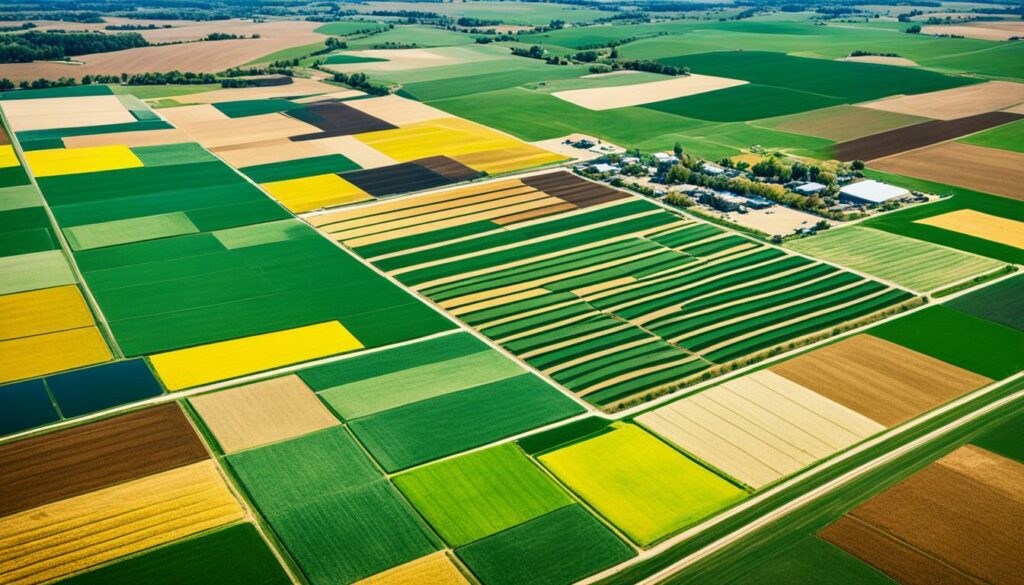
Farms produce mainly carbon dioxide (CO2), methane (CH4), and nitrous oxide (N2O). These come from how we handle soil, manure, and use fertilizers. Learning where these gases come from helps us find ways to reduce them.
Methods like planting cover crops can lower CO2 emissions. But, there’s still argument over how well these work. Nitrous oxide comes mostly from fertilizers. We could use less by testing the soil first to see what it really needs.
Methane comes from animals and decaying manure. We’re trying to cut this with special foods for the animals. There are also machines that can turn manure into energy and capture the methane. Yet, these methods are pricey, and people still debate if they’re worth it.
The latest data on farm emissions shows how serious this problem is:
| Greenhouse Gas | Percentage of Total Ag Emissions (2021) |
|---|---|
| Nitrous Oxide (N2O) | 46.6% |
| Methane (CH4) | 41.5% |
| Carbon Dioxide (CO2) | 11.9% |
This table from the EPA tells us nitrous oxide and methane are major issues. It shows we must focus on these gases to make a real difference.
Measuring and sorting farm emissions helps us aim our solutions. It’s important for everyone in farming to know this. They can then work on ways to lower the farm’s impact on the planet.
Effective management and new strategies are key in lowering farm greenhouse gas emissions. In the United States, farm work in 2007 caused a lot of these emissions. Livestock and dairy activities were among the top culprits, mainly due to ruminants and manure breakdown. But, we can change this by choosing eco-friendly farm methods. This way, we reduce emissions and help store more carbon.
One helpful method is conservation tillage. It boosts the soil’s organic matter and is great for trapping carbon. Changing how we manage nutrients in crops and running farms more efficiently also helps. For example, we can use less petrol or diesel in our machines. To encourage these earth-friendly actions, support programmes like the Conservation Reserve Program can help farmers afford it.
Laws like the Renewable Fuel Standard and Renewable Portfolio Standards push for more green energy from farms. Joining cap-and-trade markets is another way farms can lessen their impact. These are big steps for the farming community. They show how much better we can do when we work together. By following these green methods, farmers also make their businesses stronger and safer for the planet.
Farms mainly release carbon dioxide (CO2), methane (CH4), and nitrous oxide (N2O). These gases come from livestock’s digestion (CH4), managing soil, using fertilisers, and storing manure.
Ways to cut down on these gases include conservation tillage. This is where soil is left undisturbed. Also, using nitrogen fertilisers carefully, managing manure better, and letting animals graze in different fields. Farmers can also use solar panels and wind turbines to make energy in cleaner ways.
By not ploughing fields, conservation tillage helps keep carbon in the ground. This makes for healthier soil and uses less fuel from tractors. So, it’s good for the environment all round.
Precision farming checks the soil and plants to see exactly how much fertiliser is needed. By not overusing these fertilisers, there’s less nitrous oxide in the air. This is another way to cut back on harmful greenhouse gases.
Feeding animals certain high-quality foods or additives can help cut down on the methane they produce. This lowers the gases in the air, plus it’s healthy for the animals and helps them grow stronger.
One way is to cover manure piles to stop gas from escaping. Also, using the manure wisely and capturing methane with digesters for energy are good strategies. They both reduce the impact on the environment.
Agroforestry puts trees in the farm, making nature richer and the ground better. It’s a great way to store carbon, making farming cleaner. This also brings more than one benefit to the environment.
Cover crops are plants that grow between the times when main crops are planted. They help the soil, making it cleaner and richer. This keeps carbon in the ground and benefits the whole farm ecosystem.
No-till farming keeps the soil healthy and puts more carbon in it. By not disturbing the ground, there’s less carbon in the air. This is good for the farm and the planet.
Rotational grazing moves animals to help grass and soil. It makes the land better and stores carbon, making farms more sustainable. It’s good for growing food and fighting climate change.
These assessments show where a farm can save power. They might suggest better machines or using cleaner energy. This helps the farm run better and helps the environment.
Making power with things like solar and wind stops a lot of harmful gas going into the air. It also means farms can make money in new ways and they don’t need as much oil or gas.
By covering manure and using special equipment, farmers can make less methane. This turns the gas into a clean energy, helping the planet and the farm’s bottom line.
Farms can get paid or join programmes that make them lower their bad gas output. These plans help the whole country fight climate change by encouraging cleaner farming.
To know how much gas comes from farms, experts use tools that look at everything they do. This helps find where they can do better and what really helps the planet.